BALTIMORE, MD — The Maryland Zoo in Baltimore is happy to announce the hatching of three Von der Decken’s hornbill (Tockus deckeni) chicks in the African Aviary.Von der Decken’s hornbill is a small member of the hornbill family and was named after the German explorer Baron Karl Klaus Von der Decken, who described this bird in his writings about his explorations in Africa. In the Zoo’s African Aviary, the Von der Decken’s are easy to spot with their white and black feathers, and hooked beaks. The male has a bright orange beak and they are all very agile flyers.
“We are so excited to have a successful clutch of chicks only a year after brining this species to the Zoo,” stated Jen Kottyan, avian collection and conservation manager at The Maryland Zoo. “They are just learning to fly, but seem to be acclimating very well to all the other birds in the Aviary. The adult male and female are very attentive to the chicks, and they add a new level of excitement to an already busy aviary.”
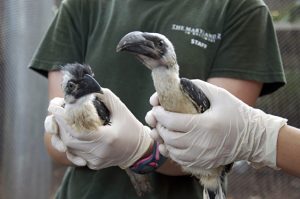
When a female Von der Decken is ready to lay her eggs, she encloses herself in her nest, caking the entrance with mud, leaving only a small opening through which the male bird feeds her while she sits on the eggs in her nest. “It was fascinating to watch the male bring her bits of food throughout the day,” continued Kottyan. “He would grab a mealworm or some fruit and hover in front of the nest box while she would stick just her beak out to grab the food. Once the chicks were large enough, she broke out of the nest, caked the entrance back up and both the male and female began to feed the chicks.”
Early this week the chicks began to break out of the nest, as they would in the wild. Zoo staff wanted to assure a good transition into the Aviary, so they created a “howdy cage” near the nest box and placed the chicks in there after a quick health assessment and weighing. “We wanted the other birds to be aware of the chicks and also to let the chicks get used to the sights and sounds. They are now out into the full Aviary and while they are not perfect flyers yet, they are gaining strength in their flight muscles every day.”
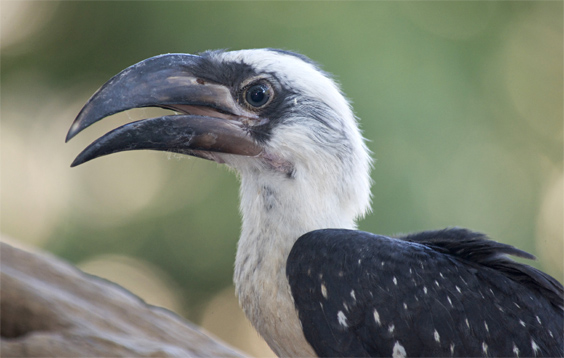
The eggs were laid between the 14th and 19th of June, and hatched the 10th, 11th and 12thof July and the gender of the birds is unknown at this time. “Right now all three chicks look like females with black beaks,” said Kottyan. “If any chicks are males, we will see their beaks turn color and become the bright orange color that adult male Von der Decken’s retain through their lifetime.”
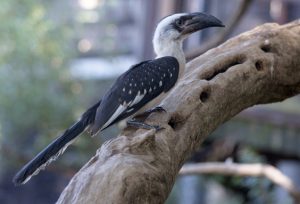
Von der Deckens are found across eastern Africa from central and eastern Tanzania, throughout Kenya, and into southeastern Ethiopia and Somalia. The birds favor the open bush and scrubby woodlands of the dry savanna and arid steppe. They are 17-20 inches long, with mainly white plumage on their body with black wings and a black tail. The male has a very distinctive red and ivory two-tone bill. The female has an entirely black bill. The long bill allows them to forage and collect food items from branches they could not reach otherwise. Their short, broad, and rounded wings are efficient for short intervals of flight but not ideal for extended periods. In the wild, their diet consists of snails, mice, nestling birds, lizards, tree frogs, seeds, fruit, berries, and insects. “At the Zoo they are fed a mixture of meat, fruit, vegetables and bugs,” continued Kottyan. “We are also in the process of station training them so we can call them to a certain perch each day to give them a good visual inspection and ensure they are staying healthy.” Zoo visitors can now see the Von der Decken’s in the African Aviary.
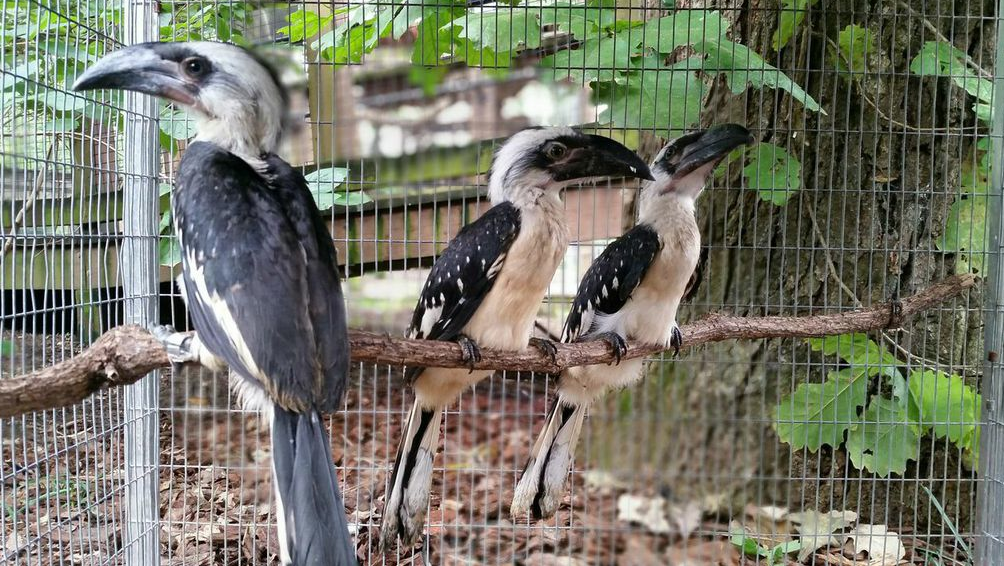


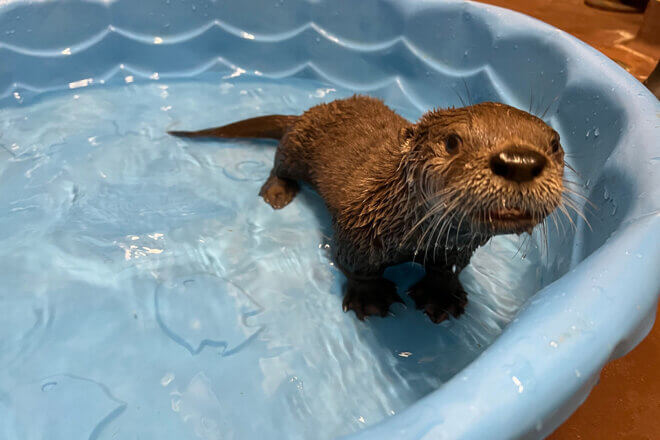



Share this article